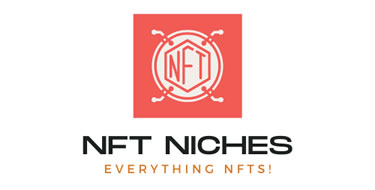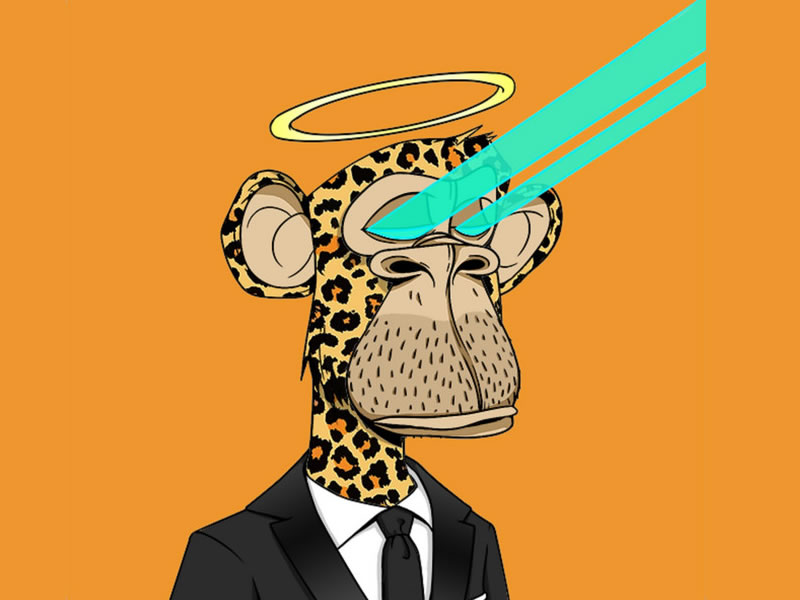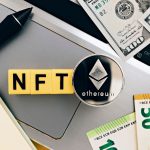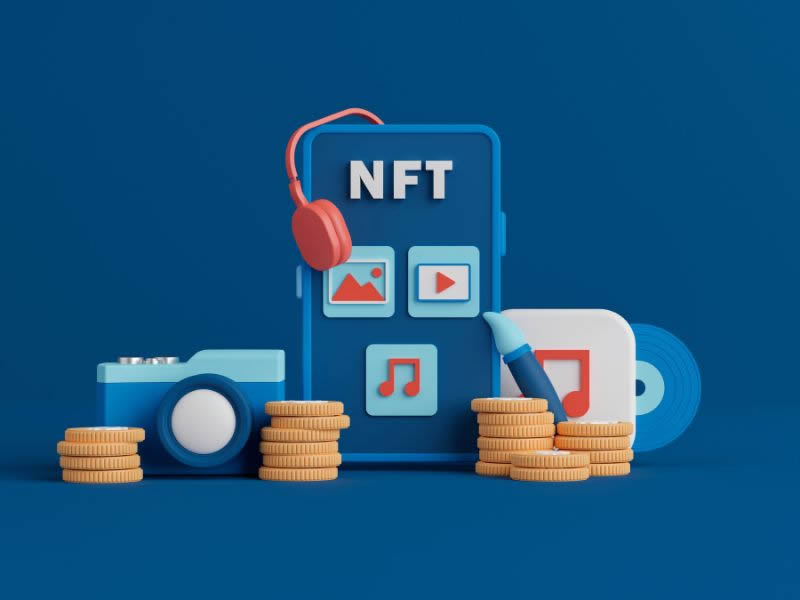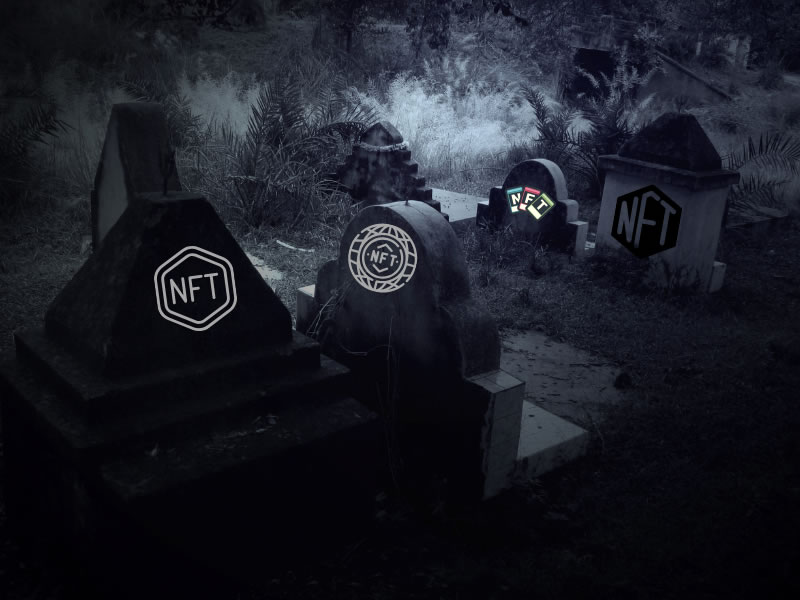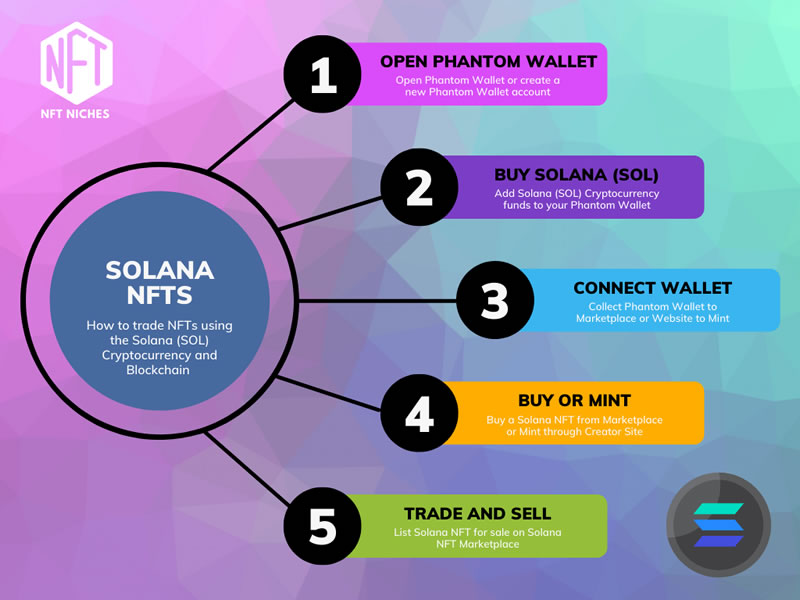So many NFT collections and projects are launching but finding the best and right NFTs is becoming more and more difficult and time consuming.
Every day there are over 100,000 new NFTs available for minting, and an average of 15 collections.
I have just recently spent 7 hours researching many NFT projects, doing as much due diligence as I could and analyzing every statistic I could see.
Some NFT projects are clear red flags, some are so new it’s challenging to see if there will be potential, others just lost in the sea of other NFT launches and one or two hidden gems.
In this guide I will walk you through exactly the things you need to be looking out for to invest in the best NFT projects, how to avoid the red flags, how to look at past successful NFT launches and use to your advantage and how to do your own due diligence.
The best NFT projects to invest in to provide a good reason to invest with a visible (doxed) and experienced team. An existing following is a trend that provides a good foundation for a successful NFT launch. Having a reason for people to invest and want to hold on to their NFTs is crucial for NFT success.
If you have bought a couple of NFTs before, you may know the pattern that almost always repeats.
The buzz before mint, the whitelist launch, the public sale, and everyone excited for the reveal.
The reveal happens and so many buyers realize they have not been awarded one of the rare NFTs (of which the odds are on average around a 0.01% chance).
All those holders were just looking for the chance for a quick profitable flip and then start a sell off, undercutting each other, to recoup as much of the cost of the NFT as possible.
This is terrible for the NFT project as each seller tries to undercut the other which drives down the floor price of a project.
On the other hand, if there is a reason to hold on to your NFT, even if it isn’t a rare item, there isn’t a need to immediately sell after reveal.
This helps push up the price and demand, and these two important aspects of the NFT market means a return on investment for buyers.
There is a clear shift in buying patterns of the most experienced in the business to focus on NFT projects that offer a clear reason not to sell and take advantage of the benefits on offer for NFT owners.
How to Find Good NFT Projects to Invest In
It’s all well and good learning how to research and analyze an NFT project once you find it, but how do you find NFT projects that are due to mint soon.
How to find NFT Projects Minting Soon
There are three main ways of finding NFT projects before they launch:
Good NFT Influencers
There are a good number of NFT buyers, investors and collectors who are willing to share good information about methods and tactics they have used, along with insights on up-and-coming NFT launches.
These influencers are generally part of expensive to join elite alpha groups and can share a small number of good NFT projects, or those that pass the initial due diligence checks.
This is a great starting place to build a list of NFTs due to launch.
Unfortunately like with any industry where a lot of money is being pumped in quickly, the scam artists turn up in droves.
These scammers will do everything they can to steal cryptocurrency from unsuspecting newbies.
They do this by:
- Direct messaging users on Twitter and Discord promising fast mints of popular NFTs
- Create fake NFT collection profiles selling worthless NFTs
- Launch NFT projects, and then disappear with the proceeds without delivering on the promises in their roadmap (this is also known as a rug pull)
Having your wits about you in the NFT industry is important not to lose money.
If you have your cryptocurrency stolen, there is little chance of ever getting it back.
Therefore, it is key to follow influencers with a proven track record, who are very visible and those influencers you resonate with.
Equally it is essential to follow official Twitter accounts, official Discord channels and only mint using official links – NEVER use a link you have been sent by a Direct Messaging!
Up and Coming NFT Finding Tools
Following investors is a good way to find some NFT projects but there are tools available monitoring launched NFTs, which NFTs whales (high rolling investors have bought in to) as well as soon to launch NFT projects.
Due to how much money can be made in NFTs, these tools often sit behind expensive paywalls, on a pay per month subscription basis.
Some of these cost upwards of $300+ per month.
There are though some free tools available, and paid tools that provide some data for free.
It is advisable to start with the free tools first.
A selection of tools that are still free (as of now at least) are below:
These tools will at the very least help you build up a list of NFT projects to then conduct your research and due diligence on.
The steps for researching NFT projects and how to carry out your own due diligence is covered further below in this article.
The original and most used method to find out about forthcoming NFT projects is through Twitter.
Twitter perhaps an unusual choice for being the prime social media platform for anything NFT related, has millions of founders, influencers, whales, buyers, and newbies all waiting on every tweet and post to find new launches and those diamonds in the rough.
Not only a great social media soapbox for NFT launches, but it was also the most turned to place to find and win whitelist spots.
A whitelist is a presale list allowing a small number of people buying an NFT in the collection earlier than anyone else, and usually at a lower price.
Whitelists are a great marketing tool for NFT collections and a great way to get in early, guarantee a mint and buy at the cheapest possible price.
Although Twitter was the best way of finding new NFT projects, and winning whitelist spots, there is another way.
A different way that I have personally been seeing great success in. So much in fact I have won 22 whitelist places in less than 48 hours using this method.
This method is NFT Discord collabs.
Join NFT Discord Channels for Collabs
Discord channels are finding it more difficult to keep engagement from those who register for their server, especially those who are just joining with hope of joining the whitelist.
One-way NFT projects are retaining their users, and keep them visiting each day, are to collab with other NFT collections.
A collab partnership means a forthcoming NFT project will host a whitelist competition in another to help with their own marketing activities.
It benefits both NFT Discord channels with returning and new visitors and benefits the users with whitelist opportunities.
Look at any Twitter NFT whitelist competition and often you will see thousands of entrants.
The Whitelist collab competition is a relatively untapped opportunity and, in some cases, there are more whitelist places on offer than people entering the competition!
This is how, within 48 hours, I managed to win whitelist places for 22 up and coming NFT projects. One of which a friend of mine had been trying for ages to get on the whitelist for.
Look for Collab and Giveaway channels within the NFT projects Discord channel and enter as many competitions as you can find.
Once you have won a spot due your due diligence first. NFT projects are trying to give whitelist places to those who will mint, if not for them it’s a wasted place.
If though you are interested in the project and believe you will mint, then claim your whitelist place once won.
Once you have your list together of all forthcoming NFT project minting releases, it’s time to do some research and due diligence.
How to do Due Diligence on an NFT Project
Now that you have a short list of potential NFT candidates to buy, it is time to carry out due diligence on the collections to try and identify the best NFTs from the worst NFTs.
What is due diligence?
Due diligence is simply researching and investigating the NFT collection, its popularity, its long-term appeal, and the founders to look for good indicators of a good project and avoid red flags.
To make this process as simple as possible, here is a checklist of things to look out for when researching any NFT project.
These indicators are tried and trusted again and again as you will see almost all successful past NFT projects have many or if not all of these indicators and would have shown a lot of positive signs even before the project launched.
There are also key indicators to avoid, and stay clear of, and we will cover these too.
Are the NFT Founders Doxed?
The term ‘doxed’ means private information made public.
It’s a term given to NFT founders when they make themselves known and public, rather than hidden behind pseudo names and graphics rather than their real photos.
Although it’s understandable that not everyone wants to be in the public eye, unfortunately if you want to launch a successful NFT project and hold on to a digital wallet of $3million of buyer’s investments with a long-term view of delivering a road map, it is crucial you make yourself known.
There have been too many rug pulls in the NFT industry (where the founders disappear with all the investment fund and leave the NFTs worthless just after launch).
Many savvy NFT buyers will only buy in to a project if the founders make themselves public and known.
Knowing who the founders of an NFT collection are, is not only important to reduce the chances your $300 NFT becomes worthless 24 hours after minting, but also important for one other reason.
If you have ever watched the dragons on Dragons Den, you will hear them say time and time again they invest into the founder of the startup as much as the business being pitched.
The right founder behind an average business can still see it become incredibly profitable, but a bad founder behind a good business can see it fail in a short space of time.
This is true of an NFT project.
Essentially many NFT projects are startup business that need to raise capital, and do so by NFT sales than crowdfunding, investment (by a venture capitalist for example) or loan.
The startup business needs to manage staff, capital of around $2million – $3million and deliver on what is often a challenging business in a crowded space.
Good NFT Founder Signs
- The founders have put themselves in the public eye with their real names and photos
- The founders have the right experience, knowledge, and mindset
- They run a business or a successful NFT project in the past?
- They experienced professionals
- The founders have their own following
- You would trust the founders with $3million of your own money to deliver on the long-term roadmap they have promised
Bad NFT Founder Signs
- The founders are hidden, their names are not known
- They are inexperienced and come across as unprofessional with communication
- They are new to NFTs and any business startups
- The founders have no social following
The right type of founders are essential for any business startup, including that of an NFT project, to succeed and survive.
Having good founders at the helm is a good, positive sign.
Is the NFT Project Popular on Social Media?
The NFT project could be incredible with wonderful artwork, great founders and a ambitious but amazing roadmap – but if no one knows about it, the project will never be successful.
The only way any NFT project becomes successful, and NFT holders make a good return on their investment, is through the popularity of the project and the demand for the NFTs within the collection.
When demand is higher than supply, then the value of the NFT will increase.
When demand is lower than supply, then the value of the NFT will decrease.
This is basic supply and demand economics of course.
If before launch there is a flurry of excited anticipation, with good engagement on Twitter posts and many users active in their Discord channel, it’s a good sign.
As the number of Twitter followers and Discord members can be artificially inflated (buying followers is one method) this shouldn’t always be seen as a sign of popularity.
Engagement, such as a high number of likes and retweets or many messages and a lot of chats and discussions within the projects Discord channel are much harder to fake and can be seen a more reliable indicator.
Popularity should be seen as a good sign in your due diligence checks.
Utility
NFTs have been on the market for a few years now, which started with Crypto Punks back in 2017.
This active time allows us to now look back at the few NFT projects that have done amazingly well, and the very high number of NFT projects that have already disappeared.
One pattern that repeats again and again is the immediate selling of NFTs in the collection after the reveal, which heavily reduces the price and value of everyone holding on to an NFT in the collection.
The reveal shows which NFT buyers were fortunate enough to be given a rare NFT. Rare NFTs in popular projects can immediately see the holders make up to 20x to 50x their original investment.
Unfortunately, this accounts for a tiny percentage of holders which can be as few as 10 out of 10,000, or just a 0.001% chance.
At least 9,000 holders will release their NFT are not particularly rare, and without a reason to hold on to their NFT they immediately sell looking to recoup some of their investment.
This huge influx of NFTs hitting the market, and a much smaller number of buyers on the secondary market, means each NFT holder tries to undercut everyone else driving down the value of the NFTs in the collection incredibly quickly.
This is where utility comes in.
Utility are the benefits on offer to those people who keep on to their NFTs and do not sell.
Good NFT projects are those that offer better utility than other NFT collections on the market.
Good utility means a reduced number of NFT holders wanting to sell after reveal, which helps hold the floor price.
Example of utility includes airdrops of other NFTs, competitions for cryptocurrency or NFT prizes, merchandise, exclusive events only available to NFT holders etc.…
The better the utility and the better the reason for a buyer to want to hold on to their NFT (HODL) rather than sell are very good signs to help the NFT project stay healthy.
NFT Artwork Quality
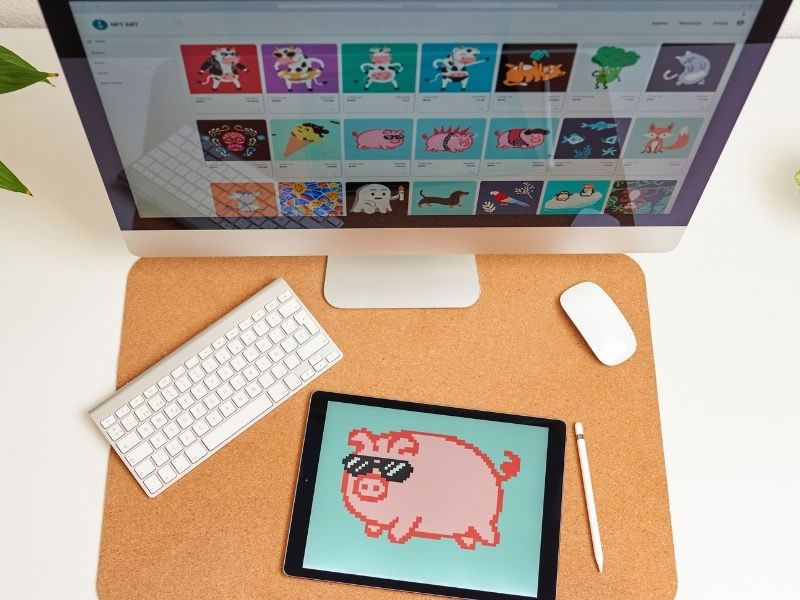
The quality of the NFT artwork as an indicator of the success of the NFT project in the past is not very clearly defined.
There are many NFTs on the market with less than amazing artwork that have gone on to become incredibly valuable, such as Vee Friends and Crypto Punks.
Although recently there is a shift towards top NFT buyers looking for quality artwork, particularly when the brand of the project looks appealing and at times quirky.
A recent example is the NFT project Dippies.
The artwork behind Dippies is incredible. The world and story not only appealed but resonated with a large audience.
Dippies was tipped to be big before they launched, and much of this was down to the quality and quirkiness of the artwork as well as the brand appeal.
The NFT industry is shifting.
Artwork is at the forefront of the emerging market that has been born out of cartoon graphics of apes, and poor graphics.
If the NFT artworld is to continue it must be based on art appeal. Essentially it is the art that is being invested in to.
Brand is as important as the artwork itself. This is what set Dippies apart from the rest of the NFT collections launching at the time.
This collection oozed charisma and character and gave buyers an immediate high return on investment.
Although the artwork is important, so is the artist.
NFT buyers look towards the artist of the NFT collection as much as the art itself.
Art designed by already established artists, with social following, often attract a larger audience and increase demand to the NFT collection.
So, when critiquing the artwork to see whether it is something that any buyer would be proud to paste over their social profiles, or even adorn on their wall, research the artist behind the collection.
The better the artwork by an already established artist, the better the sign of the NFT project to do well once it launches and provide holders a return on investment.
In Conclusion – Best NFTs to Invest In
Although the NFT market will constantly shift over the next few years, the initial bull market investing in anything and everything, has already started to shift.
Smart buyers are looking at the patterns of successful NFT collections to see which collections in the past succeeded and which failed,
Following demand alone and getting hooked on the dopamine exciting of an NFT launch, has the same result of 5-year-old soccer – 20 outfield players all chasing the ball!
The smart players in the NFT market are not chasing the ball, they are looking at where the ball with go next.
NFT projects are businesses and should be treated as such.
They promise roadmaps of metaverse games, or land or other business launches, but it is important the founders can deliver on that promise.
Artwork needs to good enough for people to want to buy in to, and an established artist can only help.
Roadmaps can take time. It can take 12months or more before the business behind the roadmap can be created, and before the NFT holders will know whether their $300 investment was worthwhile.
The problem in this ever-moving industry is that NFT holders are an impatient bunch.
They want to buy an NFT one day for $300 and sell the next day for $30,000.
The chances of this happening are almost zero but give NFT holders a reason to hold and not sell is one of the best ways to keep the project running with increased demand in the secondary market.
Following all the methods in this guide can not guarantee success of course. The NFT market is incredibly risky and highly volatile, but those NFT buyers who always seem to choose the best NFTs, and make the best returns, are those who are the most thorough during the due diligence stage!
